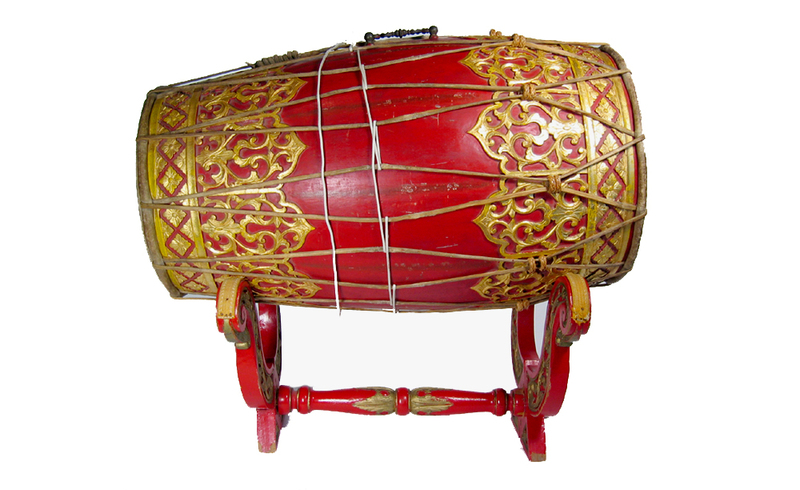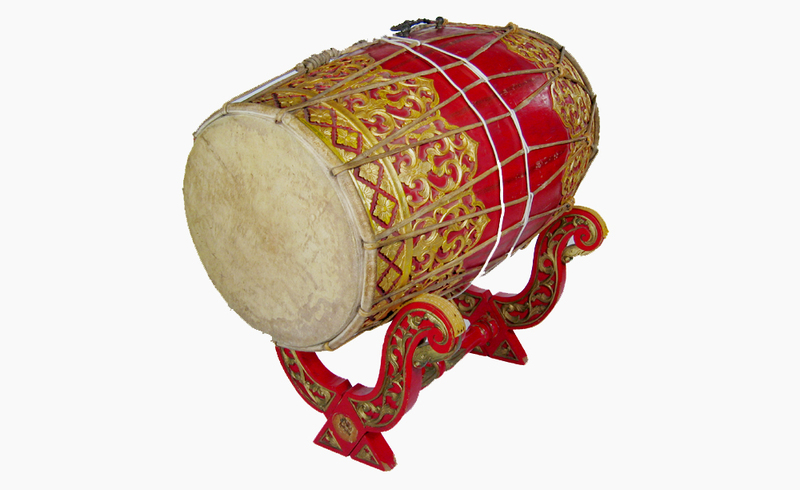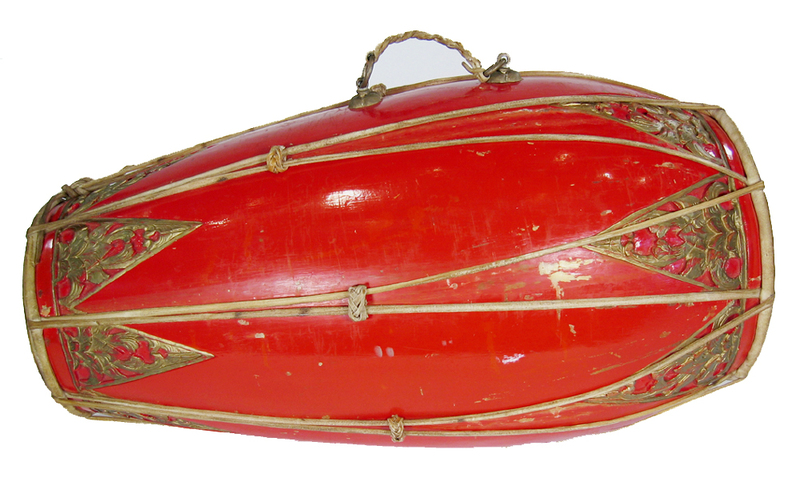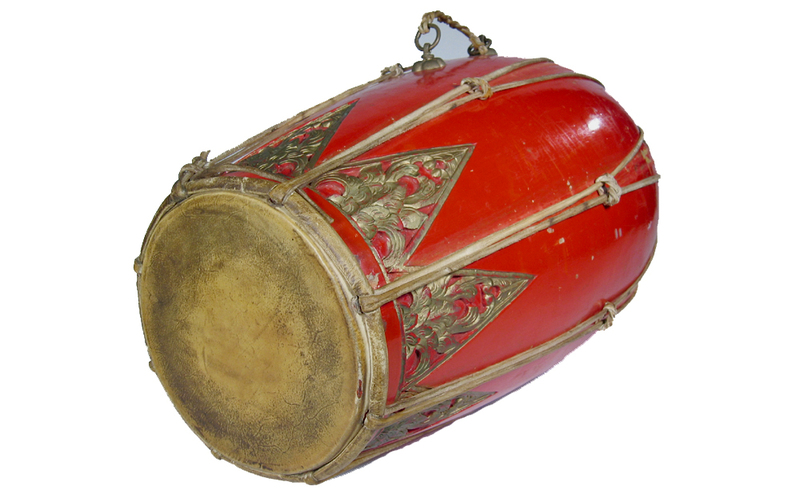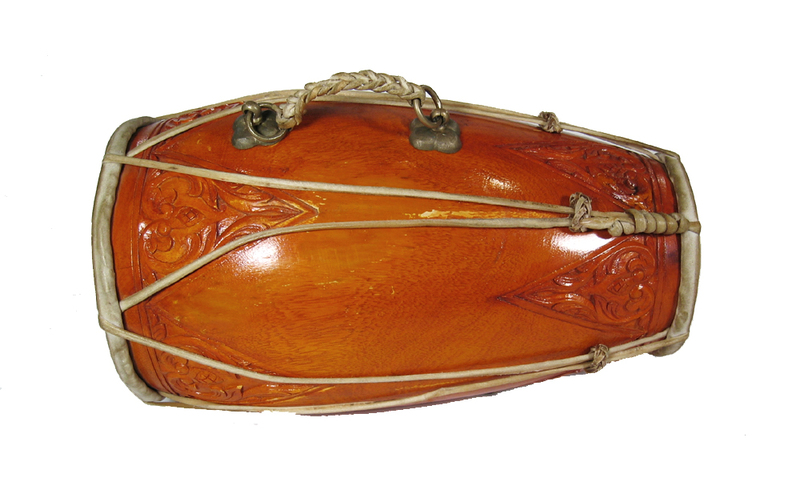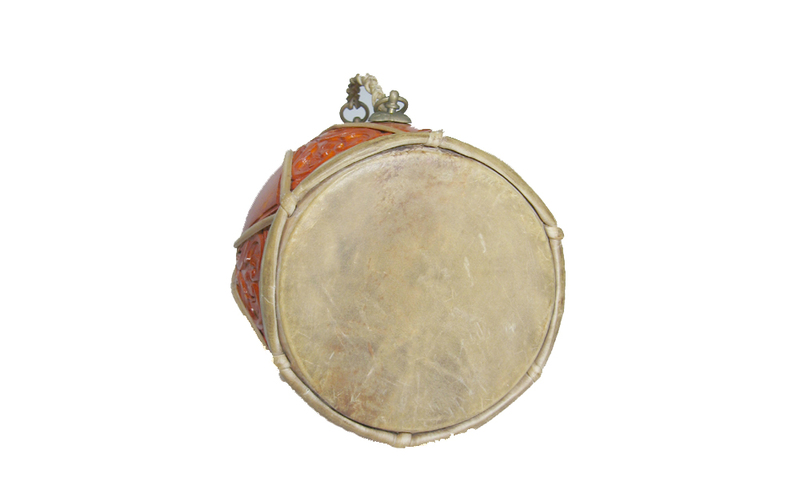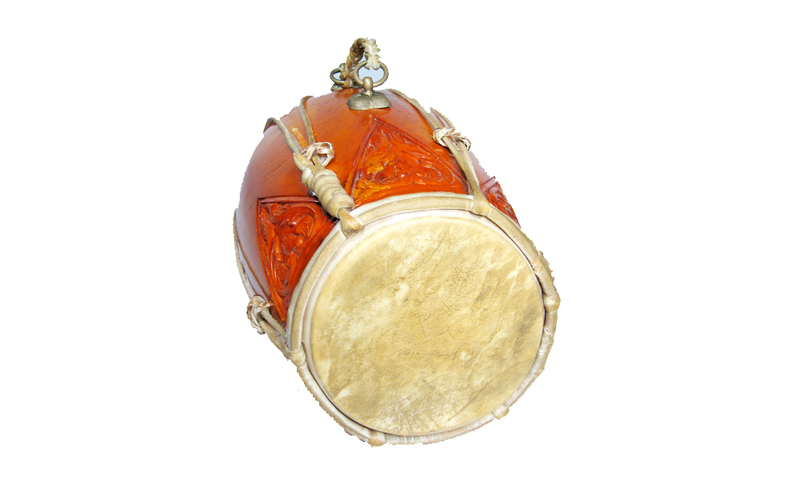Kendhang
Title
Video
Alternative title
Physical description
The kendhang is a two-headed, barrel shaped, asymmetrical drum with heads that are stretched with leather hoops laced in a “Y” pattern.
Although not always present, there is another kind of drum called bedhug. It is a large, symmetrical, barrel-shaped drum with two nailed heads of the same diameter. The bedhug is hung on a stand or placed on a wooden frame. It is played with a mallet. It is exclusively played for loud pieces or for accompanying dance.
Historical background
It is most likely that the drums existed long before they were part of the present expansive gamelan ensemble. We find drawings of different shapes and sizes of drums on the walls of old monuments and temples, such as the 9th century Borobudur Buddhist monument in Central Java and the 14th century Panataran temple in East Java. Among the variety of drums, the asymmetrical barrel shaped drum became a regular part of the gamelan ensemble. Other kinds of drums, such as conical shaped drum, are reserved for special ensembles (i.e., Monggang, Kodhok Ngorek, and Cara Balen).
